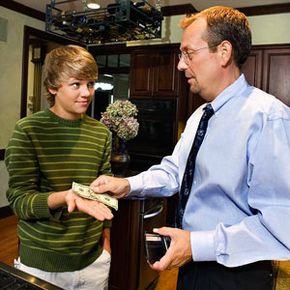So you're going off to college, entering a strange new world. It's exciting, and perhaps a bit scary, but you should know that there's always somewhere you can go to to feel wanted. No, not your parents' house -- your old room is probably being redecorated right about now -- the bank. Any number of fine financial institutions will offer you everything from free checking to a free iPod to get you in the door.
Why? Because they love you and want you to be happy. No, wait -- that's your parents. The banks have other motives for their inviting behavior. The bottom line is, they want your business, and there are a couple of reasons for this, one slightly cynical and one, well, more cynical.
Advertisement
Ultimately, banks want to make you a loyal customer. Once a bank gets you in the door with a starter account, it hopes you'll go on to more lucrative things like taking out student loans, auto loans and home loans, running up credit card debt, and possibly taking out a home-equity loan to pay off the credit card debt so that you're a never-ending source of business (and income) for the bank.
In the short term, though, there are the fees. Lots and lots of fees. The Center for Responsible Lending reported that in 2008, U.S. banks took in $46.3 billion in various service charges and fees [source: Center for Responsible Lending]. You're looking for a place to keep your money, not a place to spend it, and while introductory offers can be a way to keep costs down, it's important to read the fine print and look at different kinds of accounts before you commit.
Advertisement



